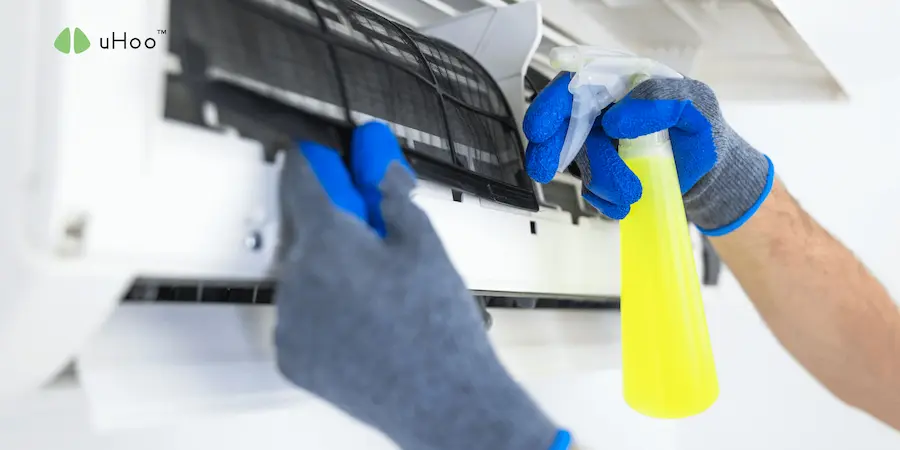Filters are designed to capture and trap airborne contaminants, preventing them from circulating within your living spaces. However, this very function dictates their finite lifespan. As filters accumulate dust, pollen, pet dander, mold spores, and other pollutants, their efficiency progressively diminishes. This isn’t a gradual decline into uselessness; it’s a ticking clock with significant consequences:
- Diminished Air Quality: A saturated filter can no longer effectively trap airborne irritants. Instead, the restricted airflow can force trapped particles back into the airstream, negating the filter’s purpose and reintroducing pollutants into your breathing zone. This can exacerbate allergies, asthma, and other respiratory issues.
- Increased Strain on Appliances: When airflow is impeded by a clogged filter, your HVAC system has to work harder to circulate air, leading to increased energy consumption and higher utility bills. Similarly, a blocked vacuum filter reduces suction power, making cleaning less effective and potentially overheating the motor.
- Breeding Ground for Microorganisms: The warm, often humid environment within a neglected filter, combined with the trapped organic matter, creates an ideal breeding ground for mold, mildew, and bacteria. These microorganisms can then be dispersed throughout your home, posing a health risk.
- Reduced Appliance Lifespan: The added stress on overworked appliances due to clogged filters can lead to premature wear and tear, increasing the likelihood of breakdowns and shortening their overall lifespan.
The key to avoiding these pitfalls lies in understanding the recommended replacement intervals for each type of filter in your home and adhering to them diligently. While general guidelines exist, the optimal frequency can vary based on factors such as:
- Occupancy: Homes with more occupants generate more dust and allergens.
- Pets: Pet dander significantly increases the particle load on filters.
- Allergies or Respiratory Issues: Individuals with these conditions benefit from more frequent filter changes.
- Outdoor Air Quality: Homes in areas with high levels of outdoor pollution will see their filters load up more quickly.
- Usage: The more frequently your HVAC system or air purifier runs, the faster the filters will become saturated.
Here are general timelines to guide you, but always prioritize manufacturer recommendations:
- HVAC Filters (Standard 1-inch): Every 1-3 months. During peak heating or cooling seasons, or in homes with pets or allergy sufferers, aim for monthly changes.
- Vacuum Cleaner Filters: Follow the manufacturer’s instructions. Some are washable and require regular cleaning, while others need replacement every 3-12 months.
- Air Purifier Filters: Pre-filters often require monthly washing or replacement. HEPA and activated carbon filters typically need replacement every 6-12 months, depending on usage and air quality.
- Kitchen Range Hood Filters (Grease): Wash monthly.
- Kitchen Range Hood Filters (Charcoal): Replace every 3-6 months.
Strategies for Timely Filter Changes
- The Visual Cue: Make it a habit to visually inspect your filters regularly, especially your HVAC filter, at least once a month. If it looks visibly dirty or clogged, don’t wait for the recommended interval – replace it immediately.
- The Calendar Companion: Set recurring reminders on your phone or calendar for each type of filter in your home based on the recommended replacement schedule.
- The “Season’s Change” Prompt: Tie filter changes to seasonal transitions (spring, summer, fall, winter). This provides a consistent and easy-to-remember trigger.
- The “Subscribe and Save” Solution: For frequently replaced filters like HVAC filters, consider setting up a subscription service that automatically delivers new filters to your doorstep on your chosen schedule.
- The “First of the Month” Rule: Designate the first day of each month (or another consistent date) as “Filter Check Day.” Even if a replacement isn’t immediately needed, the visual inspection will keep you aware of their condition.
- The “Note It Down” Habit: When you replace a filter, write the date of replacement directly on the filter frame with a permanent marker. This provides a quick reference for when the next change is due.
While adhering to a timely filter change schedule is crucial, gaining real-time insight into your indoor air quality can further optimize your efforts. A uHoo air quality monitor acts as your vigilant IAQ sentinel. By continuously tracking particulate matter (PM2.5 and PM10), volatile organic compounds (VOCs), humidity, and temperature – all factors directly influenced by the efficiency of your filters – uHoo provides tangible data on the air you breathe.
After implementing a timely filter change routine, monitor your uHoo readings. A consistent maintenance schedule should correlate with lower levels of particulate matter and improved overall air quality. Conversely, consistently elevated readings, even with regular filter changes, might indicate the need for more frequent replacements, higher-efficiency filters, or the presence of other indoor pollution sources that require attention.
uHoo empowers you to move beyond guesswork and make informed, timely decisions to ensure a consistently fresh and healthy indoor environment for you and your family. Embracing the timeliness of filter changes is not just a chore; it’s a proactive investment in your health, the longevity of your appliances, and the overall quality of your home life.

